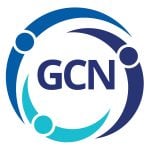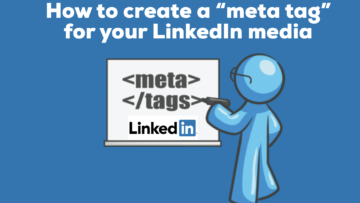The job market is tough. You apply to countless roles, hear nothing, and wonder why there’s no response. It’s time to explore the AI Dos and AI Don’ts of Job Search.
Many job seekers blame recruiters for their lack of responsiveness or impersonal auto-responder email replies. They also wonder why they are being ghosted.
But here’s the truth: Recruiters aren’t the enemy. They’re handling hundreds of roles and thousands of applicants.
This article was co-authored by career coach Lynne Williams and Andrey Maltsev, the founder and CEO of Flidais.ai. The co-authors align on this topic as a whole, but may each bring complementary perspectives and approaches to enrich some concepts.
It’s a paradox: Artificial Intelligence is making their jobs easier and harder at the same time
On the one hand, companies may employ AI-powered Applicant Tracking Systems (ATS) to sift through thousands of applications in seconds. On the other hand, job seekers are also using tools like ChatGPT to spin out resumes and cover letters at record speed. There are AI Dos and AI Don’ts that job seekers should note.
The result? Recruiters are buried in a mountain of generic, AI-written resumes
“I can tell within five seconds if a resume is AI-generated,” one tech recruiter told me. “They all start to sound the same, polished, wordy, and completely forgettable.”
Instead of helping candidates stand out, AI is often doing the opposite: pushing them into a pile of sameness.
Worse yet, some firms are now cracking down on this practice. At least we know of one of the Big Four consulting firms that has been reported to blacklist candidates whose resumes are flagged as being written by AI.
The good news: When used strategically, AI can be a powerful ally
It can help you research roles, analyze job descriptions, polish your writing, and even prepare for interviews. The key is knowing the right way and the wrong way to use it.
Here’s your guide to the AI Dos and Don’ts of a modern job search that will be brought to you in two parts.
The AI Don’ts: How AI Can Quietly Kill Your Chances
#1 of AI Don’ts: Copy-Paste Job Descriptions Into AI
Bad prompt: “Make me a resume for this job description.”
It may seem efficient to feed a job post into AI and quickly get a resume, but this often results in invented responsibilities, exaggerated impact, and buzzword-heavy content that recruiters easily spot.
The majority of the resumes may have the same recycled phrases: ‘results-driven,’ ‘dynamic professional,’ ‘demonstrated track record.’ None of it means anything, so forget the “fluffy adjectives.” Tell your story with your accomplishments, sharing how you helped a company make or save money or time.
The risk goes beyond annoyance. ATS software can flag inconsistencies or keyword stuffing. And what if a recruiter finally calls you and you can’t explain the bullet points AI wrote for you? That would be the end of the conversation.
#2 of AI Don’ts: Dump Your Resume Into ChatGPT and Say “Rewrite for Me”
Bad prompt: “Change my resume to fit this job description.”
AI doesn’t know your story, lacks your context, and can add or exaggerate responsibilities, which puts you at risk of unintentionally misrepresenting yourself if generating a resume solely from a job description.
Recruiters often cross-check resumes against LinkedIn profiles or other sources. If the details don’t match, you lose credibility fast.
Hiring a career coach ensures your resume highlights your unique strengths and accomplishments, rather than sounding like a cookie-cutter document generated by AI that blends in with everyone else’s.
#3 of AI Don’ts: Auto-Generate Cover Letters
A simple truth is that cover letters may or may not be read these days. The volume of applications may not allow for review due to a recruiter’s time constraints. Usually, Applicant Tracking Systems (ATS) don’t parse cover letters for keywords. But when cover letters are read, they matter and can help you differentiate yourself, especially in a smaller company, a nonprofit role, an executive role, referral situations, or when specifically requested.
An AI-generated cover letter almost always falls flat. It parrots your resume, uses long sentences and unnatural phrasing, and, more importantly, it does not meet the goal of the Cover Letter, which is to convince the hiring manager to grant you an interview.
If you must submit one, draft it yourself, be original, and tell your story. Then, at most, use AI to polish tone or tighten structure, but be cautious with AI giveaways, such as the infamous em dash (—) that ChatGPT often uses.
Lynne’s favorite cover letter is a T-style, which has a table. On the left are key phrases right from the job description, and on the right is your own verbiage of how you match. With a T-style cover letter, you are handing yourself to the company on a silver platter, demonstrating how you are a perfect fit for the job.
#4 of AI Don’ts: Use Words You Don’t Understand
AI often defaults to sophisticated vocabulary. If you wouldn’t naturally use a phrase, don’t put it on your resume. Use simple language so recruiters can easily read it.
Instead of: “Orchestrated the end-to-end ideation, development, and implementation of
an innovative workflow solution…”
Try: “Led the design and launch of a workflow tool that improved efficiency by 20%.”
This simplified verbiage makes your resume easier for both machines and humans to digest. If you decide to polish your resume with AI, be ready to speak and repeat any of your “arduous” points.
Nothing kills an interview faster than asking a candidate about a resume bullet point and hearing silence because they don’t understand the wording. Applicants should be preparing 7 to 10 STAR (Situation-Task-Action-Result) stories for interviews and be well-rehearsed for behavioral interview questions, as outlined in AI Resources & Tips for Interview Preparation.
A resume is a document to help you land an interview. A resume does not land you the job. The interview lands you the job. You must be able to tell your stories comfortably. If AI adds language you can’t defend, it hurts more than it helps.
#5 of AI Don’ts: Don’t Forget the Human Side
Here is the truth: AI can do a lot for you, but it can’t replace networking, building relationships, or sending a thoughtful thank-you note. Humans hire humans, not bots! AI can’t build relationships, and in hiring, relationships are the currency that matters most.
Recruiters are people first, and they appreciate candidates who demonstrate genuine curiosity and kindness, and not just algorithm-optimized resumes. Message them because candidates who reach out also stand out.
Recruiters are not sitting at their desks cackling while rejecting applications. (Well, not most of them.) They are scanning for talent, and the candidates who stand out show initiative and genuine curiosity. Be proactive!
Sending a thoughtful message on LinkedIn, asking a smart question, or following up with a thank-you note is often what sets you apart from “just another applicant” to being “someone worth a closer look.”
Optimize your documents and use AI to save time, while maintaining human oversight. Success comes from blending strategic AI usage with authentic human connection.
Sidebar: Five Prompts Many Recruiters Hate
- “Write a resume that beats the ATS.”
- “Rewrite my resume to fit this posting.”
- “Create a cover letter for this job.”
- “Make my resume sound more impressive.”
- “Fill in missing achievements.”
Each of these creates what recruiters call “AI garbage” resumes that sound polished but hollow.
We hope you found these AI Don’ts helpful. Stay tuned for Part 2 of 2 with the AI Dos for your job search.
Explore the website of Flidais AI to learn more.
Flidais believes in an AI-supported job search done differently. They are a done-for-you platform, not a “done-with-you” tool. That means they don’t generate generic resumes or blast spam applications.
Instead, the company can:
- Access over 1.5 million jobs monthly across North America
- Apply within 24 hours, so you’re among the first candidates recruiters see
- Cover 100% of postings (not just the 30% on easy AI apply systems)
- Work with you to create a strong resume that tells your story, then apply with real humans + AI support
Their AI scans, matches, and collects information, but people still hire people. That’s why they combine technology with a human touch, ensuring every application has a soul. Because they believe in results, they back it with their Interview Assurance Guarantee: if you don’t land interviews, you get a full refund.
Flidais is there to support your story, not replace it, and help you secure your next opportunity more quickly.
Of course, you can work collaboratively with Lynne on a solid base resume and LinkedIn profile, which will be done with you, along with her exclusive process for data-driven decision-making for keywords. Then you can use a platform like Flidais to find and apply for jobs on your behalf. Links are below to learn more.
Whatever you do, heed the AI Don’ts to succeed!
NEXT STEPS
- Subscribe to my newsletter on LinkedIn™ for bright ideas on how to manage your career.
- Subscribe to the Great Careers Network Substack
- If you need a resume or LinkedIn™ profile to get you to your next step, book a call to chat! Can’t beat a free discovery call!
- Join as a member at https://greatcareers.org/membership of the #1 business networking association on the Philadelphia Business Journal’s Book of Lists five years in a row!
- Follow #GreatCareersPHL
BIO
Lynne M. Williams is the Executive Director of the Great Careers Network, a volunteer-run 501(c)3 nonprofit organization that provides career development and networking connections for 1) job seekers in career transition, including veterans, and 2) employed and self-employed for career management.
Aside from writing keyword-focused content for ATS resumes and LinkedIn profiles, Lynne is writing her doctoral dissertation on LinkedIn for Job Seekers. She is a contributing author on “Applying to Positions” in Find Your Fit: A Practical Guide to Landing the Job You Love, along with the late Dick Bolles, the author of What Color is Your Parachute?, and is also a speaker on career topics.




